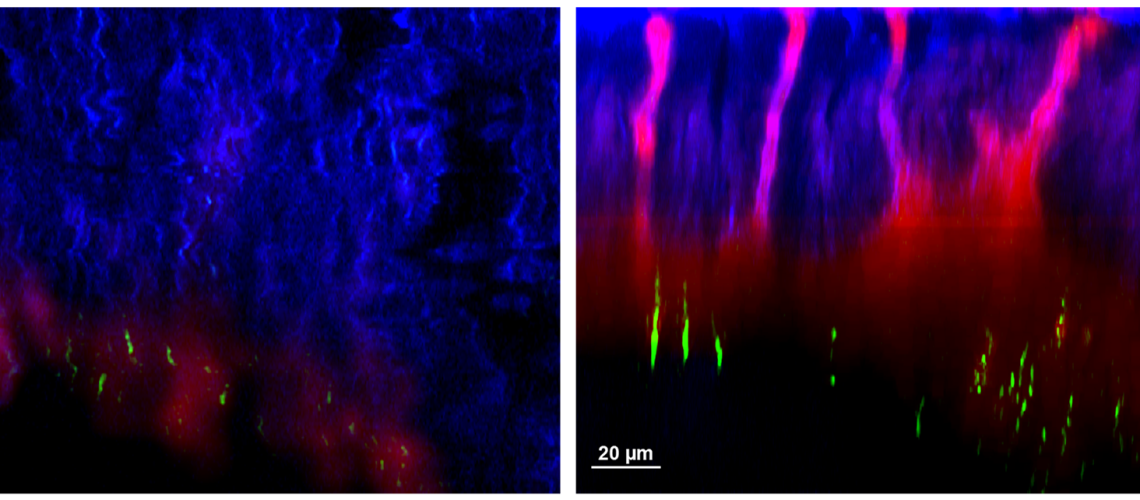Secretory Immunoglobulin A (SIgA) is the antibody produced within mucosal membranes and is the most abundant antibody type synthesized in our body. In the intestine, SIgA possesses two antithetic functions acting either in preventing or promoting bacterial colonization. When the intestine is attacked by an invasive bacterium, a strongly polarized SIgA response ensures clustering of the pathogen and clearance with the stools. Conversely, SIgA induced by gut commensal bacteria conditions the activity and contributes to the physiological function of the microbiota.
The Mucosal Immunology lab held by Fabio Grassi at IRB (Institute for Research in Biomedicine, affiliated with USI) has previously shown that adenosine triphosphate (ATP) released by the microbiota limits SIgA production.
In the present study, Lisa Perruzza and collaborators investigated whether abrogation of bacterial ATP affected SIgA repertoire structure and intestinal homeostasis. To this aim, the researcher treated mice with apyrase, an enzyme that transforms ATP in ADP/AMP. Apyrase treatment amplified the SIgA repertoire, thus influencing the topographical distribution of bacteria and consequently enhancing nutrient absorption by the intestinal epithelial cells.
It is known that the alteration of gut microbiota induced by antibiotics, called dysbiosis, provokes the impairment of intestinal barrier integrity and susceptibility to infection by pathogens. This study shows that apyrase-induced amplification of SIgA upon antibiotic treatment decreases dysbiosis and confers resistance to pathogens by promoting colonization of beneficial commensal bacteria.
Most experiments were performed at IRB with contributions by other Swiss and Italian research institutions as well as the University of Oslo. The research was funded by the Swiss National Science Foundation, the Swiss Cancer League, the Fondazione Ticinese per la Ricerca sul Cancro, the Fondazione San Salvatore and the Novartis Foundation for Medical-Biological Research.
Picture: Two-photon microscopy of the interaction of green fluorescent gut bacterium Escherichia coli (E. coli) coated by normal (left) or apyrase-amplified (right) SIgA with proximal colon mucosa. The intestinal epithelial cells (IECs) are in blue and mucus in red. In the absence of apyrase treatment, E. coli is in closer proximity to the intestinal epithelium, thereby alerting the anti-bacterial response. In contrast, bacterial distancing by amplified SIgA privileged metabolic functions in the intestinal epithelium of apyrase treated animal.
Article










